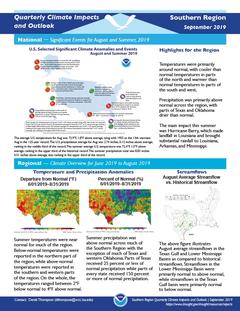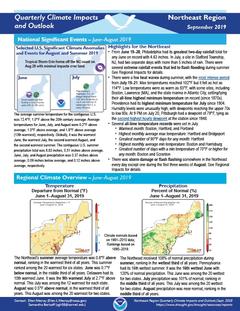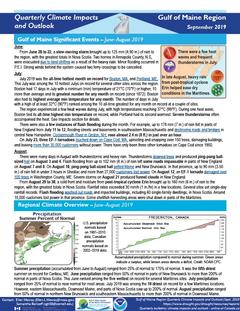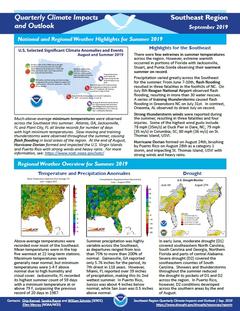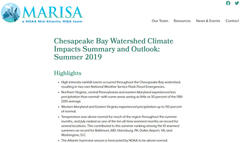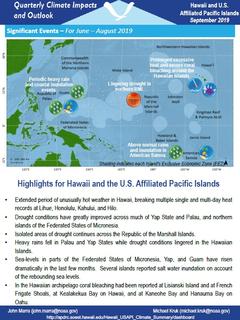Quarterly Climate Impacts and Outlook for the Midwest Region for June – August 2019. Dated September 2019.
The Midwest had close-to-normal temperatures for the summer across the entire region. Summer precipitation was near normal in the upper two-thirds of the region and above normal in the southern third.
Quarterly Climate Impacts and Outlook for the Great Lakes Region for June – August 2019. Dated September 2019.
June temperatures ranged from 3°C (5°F) below normal to near normal. July was warm, with temperatures up to 3°C (5°F) above normal. Temperatures during August and for summer were within 1°C (2°F) of normal for most of the basin. The basin experienced a wet period from the fall of 2018 through the spring. This extended into June, with all basins but Superior being wetter than average and the overall basin seeing 109% of average in June.
Quarterly Climate Impacts and Outlook for the Southern Region for June – August 2019. Dated September 2019.
Summer temperatures were near normal for much of the region. Below-normal temperatures were reported in the northern part of the region, while above-normal temperatures were reported in the southern and western parts of the region. Summer precipitation was above normal across much of the Southern Region with the exception of much of Texas and western Oklahoma.
Quarterly Climate Impacts and Outlook for the Northeast Region for June – August 2019. Dated September 2019.
The Northeast's summer average temperature was 0.8°F above normal, ranking in the warmest third of all years. The Northeast received 108% of normal precipitation during summer, ranking in the wettest third of all years.
Quarterly Climate Impacts and Outlook for the Western Region for June – August 2019. Dated September 2019.
Quarterly Climate Impacts and Outlook for the Gulf of Maine Region for June – August 2019. Dated September 2019.
Summer temperatures (averaged over June, July, and August) were up to 2°C (4°F) above normal for most of the region. Summer precipitation (accumulated from June to August) ranged from 25% of normal to 175% of normal.
Quarterly Climate Impacts and Outlook for the Southeast Region for June – August 2019. Dated September 2019.
Above-average temperatures were recorded over most of the Southeast. Summer precipitation was highly variable across the Southeast, as departures ranged from less than 75% to more than 200% of normal.
Quarterly Climate Impacts and Outlook for the Chesapeake Bay Region for June – August 2019. Dated September 2019.
Temperature was above normal for much of the region throughout the summer months, and July ranked as one of the ten all-time warmest months on record for several locations. High intensity rainfall events occurred throughout the Chesapeake Bay watershed, resulting in two rare National Weather Service Flash Flood Emergencies.
Quarterly Climate Impacts and Outlook for the Missouri River Basin June – August 2019. Dated September 2019.
This summer, temperatures were largely near normal; however, minimum temperatures were slightly above normal, while maximum temperatures were below normal. Meanwhile, extremes in precipitation occurred across the region. This summer's wet conditions were a further continuation of a generally wet pattern that has been in place since last year.
Quarterly Climate Impacts and Outlook for Hawaii and the U.S. Pacific Islands Region for June – August 2019. Dated September 2019.
Includes significant events, regional climate overview, and sectoral impacts for June – August 2019; regional outlook for September – November 2019.




